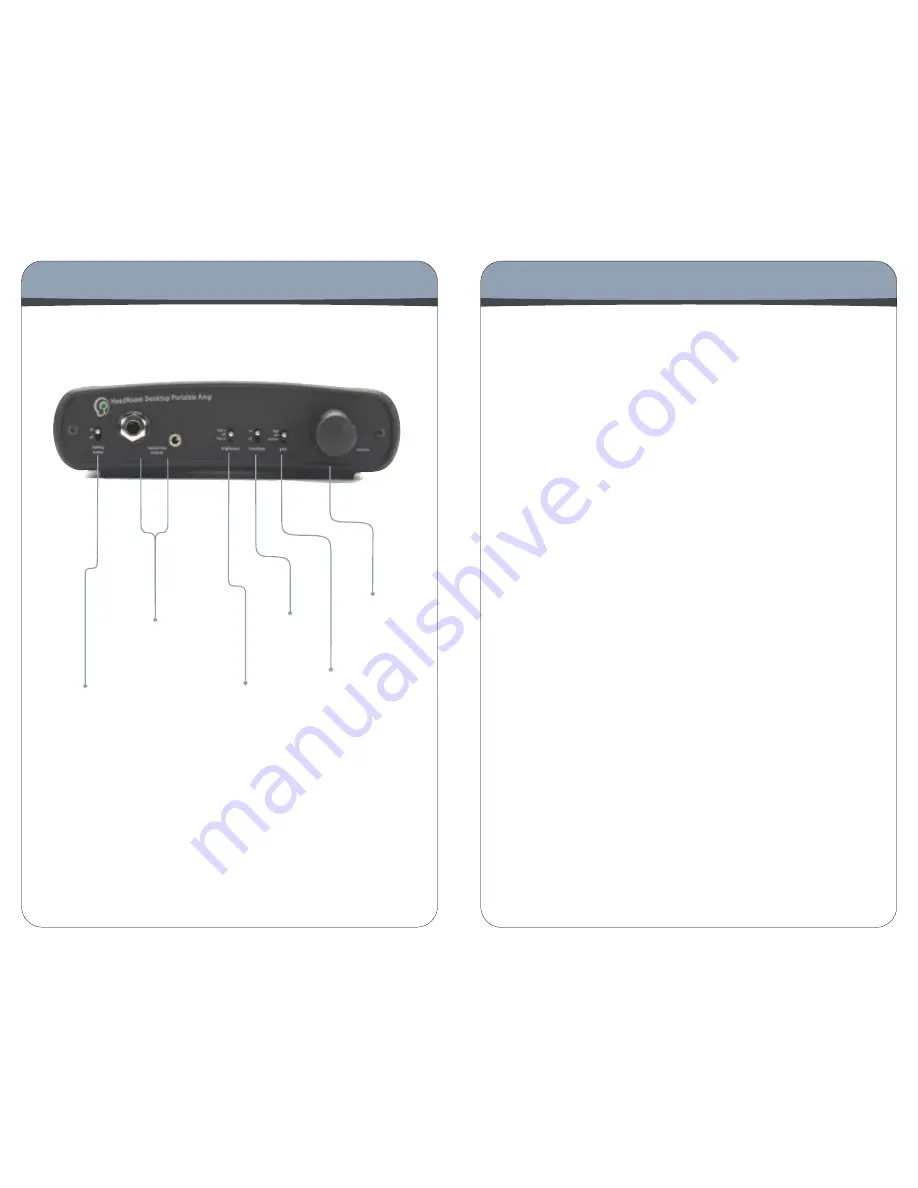
2
3
The Desktop Portable Amp
2.
Headphone
Outputs
1.
Power
Switch
3.
Brightness
Switch
6.
Volume
Control
4.
Crossfeed
Switch
5.
Gain
Switch
1. Power Switch
When using the battery pack the power switch will turn
your Desktop Amp on. The green LED will illuminute in the center of the Head-
Room logo in the upper left hand corner of the amp. When using the +/-15v
supply the amp is always on.
2. Headphone Ouputs
The headphone out is where you plug in your
headphones. The Desktop Amp is equipped with a 1/4” jack as well as an
1/8” jack, to accomodate various types of headphones.
3. Brightness Switch
The Brightness Switch is used to compensate for
the warming action of the processor. In the center position there is no filter in
the circuit; generally this is preferred. But if the processor is causing too much
bass or blurring of the central image, a mild high frequence boost filter can
be turned on. The “filter 1” setting accentuates the highs at about 3 kHz; with
the “filter 2” setting the filter starts an octave earlier and catches some of the
upper mids. Basically, set it to whatever sounds best to you.
4. Crossfeed Switch
This switch engages the crossfeed circuit. Audio im-
aging on headphones is often not very good; typically the image is a blob on
the left, a blob on the right, and a blob in the middle. The HeadRoom cross-
feed provides the natural acoustic cross-feed normally heard at the left and
right ear as heard from the left and right speaker. Adding back the normally
occurring cross-feed signal gives your brain enough information to build the
stable and natural audio image needed to have a quality listening experience.
See pg. 7 for more info on the HeadRoom crossfeed.
5. Gain Switch
The 3-position Gain Switch accomodates various head-
phones’ power needs. For instance, the Low Gain setting would be used for
in-ear monitors, allowing a larger range on the volume control pot. Experie-
menting with your headphones and the gain switch may help you to determine
which setting you prefer. If have any questions regarding your headphones,
feel free to call and ask us.
6. Volume Control
You never know where the volume control should be set
as different headphones often have widely different impedances and efficien-
cies, so use your ears to choose your listening level, not the level on the dial.
(We recommend you choose a moderate level so as not to blow out your ears.)
You also need to turn the amp OFF or ALL THE WAY DOWN before plugging in or
unplugging your headphones to avoid a potential short-circuiting of the amp.
As you turn the volume control knob clockwise, the volume increases.
The Desktop Portable Amp Front Panel
Front Panel Description







